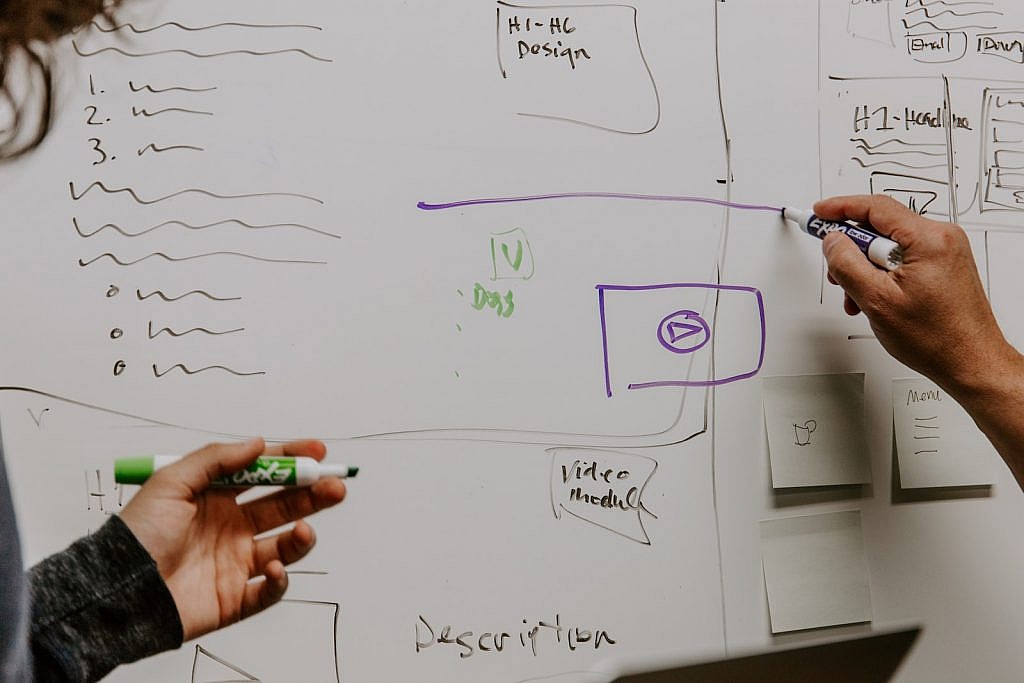Mobile App Development Lifecycle: A Roadmap to Success
As smartphones are becoming ubiquitous, it’s no wonder that new businesses strive to create a mobile app. Avoid going haywire by having a solid reference to the steps that are involved in successful mobile app development.
There are two basic approaches in regards to creating a mobile app. You can either club a few lines of code in a virtual studio, run a quick test, and submit an application to the app store; Or, take the long road, invest time and resources in design, usability testing, and deployment through multiple sources.
Either way, if you don’t invest in extensive planning, or lack a cohesive strategy, the mobile app is likely to be clamored with thousands of apps already available on the market.
With that said, in this article, we’re to break the mobile app lifecycle- briefing different stages and their significance in mobile app development.
But before we get to that, it’s important to state the difference between two commonly used, yet interchangeable terms in context to app development: SDLC and ADLC.
The process of software development is called the Software Development Lifecycle (SDLC). The stages, though, are similar to the Application Development lifecycle (ADLC), which explains how an app comes into existence: Inception, Wireframe Design, Development, App Release, and Maintenance.
- Inception
Any mobile application starts with the discovery of an idea. The idea is then refined into a solid application plan.
- Design
This phase is all about the app’s design- defining the layout, navigation, features, or anything else pertaining to UI/UX.
- Prototype
You can’t comprehend the user experience unless you experience it first-hand. Prototyping is all about creating such a similar app experience.
- Development
This stage pertains to the development aspect of an application. Usually, the most resource-intensive, this is where the real development, i.e, programming takes place.
- App Deployment
At this point, the IT professional is ready to launch the app to the desired store(s).
- Maintenance
Once the app is live, the developers continue to polish the experience by fixing any bugs, introducing new and better features, and more.
Let’s have a closer look at these stages, and know, how they can translate to the mobile app success for your business.
Six Stages of Mobile App Development Lifecycle
Often times, these stages are running simultaneously, for example, it’s common for developers to start coding whilst the UI is still being finalized.
The point being, these stages work in conjunction and are essential for a digital project to come to fruition.
1. Inception
An app comes into inception with an idea, but the same idea has to be translated into technical documentation. Here are a few key pointers that could help with the discovery/inception phase:
- Engage in competitor analysis to check for any similar apps,
- Check for how do these apps translate value to the end-customer,
- And check for the technicalities in context to your mobile application. Would it be a hybrid app? How can it be integrated into the existing infrastructure? and more.
2. Design
Once the technicalities are identified, the next stage is to shape your idea, i.e, designing a unique look for your mobile application that offers an intuitive and engaging user experience. This stage has two main parts:
- User Experience
User experience is set and established through sketches and wireframes, using a myriad of designing toolkits available online.
Though, it’s important that the UX design must comply with the interface guidelines established by different mobile app platforms. Have a look at official guidelines here: Apple, Android, and UWP.
Post determining the user experience, the designers work on the user interface. This is the phase where stencils and mockups are brought to life by adding colors, graphics, typography, and more.
Spending a great deal of time and resources on designing the best User interface is important, and quite necessary.
3. Prototyping
Technically, a prototype is the last phase of the designing stage. The idea is to create a clickable version of your mobile app, barred of added functionality.
Prototyping is essential for it helps with comprehending the touch experience, app intuitiveness, and deduce if things are moving forward in the right direction.
4. Development
Establishing a good design equates to the half part of the mobile app development process. The other half includes taking that design and turning it into a fully-functioning project.
The development stage can also be broken down into two parts:
- Front-end Development
This deals with everything that a user sees and engages. The objective of any front-end developer is to create a flawless, engaging, and lag-free experience for the end-user.
- Back-end Development
This deals with all the processes responsible for the functioning of the entire system- the app, its functionality, communication with the servers and back, and more.
5. App Deployment
This step is often the final stage in the mobile app development lifecycle, but if you’re aiming for a successful app, your journey doesn’t end here.
Once everything is in place, its time to register the app on the targetted platforms. Or, make it available online and target it to businesses to implement and benefit of it, in their specified operations.
6. Maintenance
To increase an app’s lifespan, and keep it relevant for extended periods of time, regular maintenance is quintessential.
Call it an additional step, but studying the backlogs of the mobile app and offering the bug fixes, with advanced features, increases the success rate of a mobile application.
Conclusion
Developing an app is one thing, but creating a successful app that stays relevant is an entirely different ball game. Mobile application development needs to follow the laid step-by-step process, for it promises an outcome that actually translates benefits and values to an organization.
